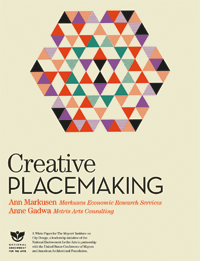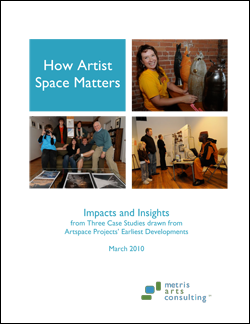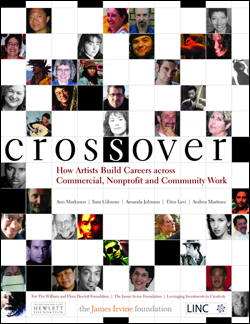Ann Markusen
Ann Markusen
At October’s GIA preconference “Measuring Impact and Translating Value: Support for Individual Artists,” more than six dozen funders convened to share their experiences supporting individual artists and to ponder how to gauge and communicate the results. The Jerome Foundation’s Eleanor Savage and Tucson Pima Arts Council’s Roberto Bedoya shepherded an agenda that included five artists speaking about their work and careers.
Read More...American artists are still emerging from a bumptious cycle of structural downs and ups and institutional changes. Since the watershed of the culture wars in the early 1990s, diverse publics and legislative bodies have questioned artists’ purposes and contributions. Supporters — patrons, funders, friends — have scrambled to help them survive. In ways that may be a great blessing, an older, constraining preoccupation with artistic excellence and peer-judged grants has eroded. More inclusive notions of who artists are and of their many missions are taking root.
Read More...Creative placemaking is electrifying communities large and small around the country. Mayors, public agencies, and arts organizations are finding each other and committing to new initiatives. That’s a wonderful thing, whether or not their proposals are funded by national initiatives such as the National Endowment for the Arts’ Our Town program or ArtPlace.
Read More...Enriching our culture and engaging diverse and underserved communities, small arts organizations pop up, flourish, and sometimes flounder, mostly under the philanthropic radar. They often foster artistic expressions not adequately served by larger organizations.
Read More...2010, 123 pages. Artspace Projects, 250 Third Avenue North Suite 500, Minneapolis, MN 55401, (612) 333-9012, http://www.artspace.org/.
Download:
![]() How Artist Space Matters (3.2Mb)
How Artist Space Matters (3.2Mb)
2011, 37 pages. Center for Cultural Innovation, 870 Market Street, Suite 574, San Francisco, California, 94102, (877) 482-0530, www.cciarts.org.
Download:
Read More...
Download:
![]() Creative Placemaking (4.7Mb)
Creative Placemaking (4.7Mb)
Creative Placemaking features sections on the:
- Challenges for creative placemaking such as clearing regulatory hurdles and developing evaluation metrics.
- Components of successful projects including mobilizing public will and designing around distinctiveness.
Like most Americans, you may be baffled by the continued optimism of our President and his advisors about the economy. Every month more people are laid off, unemployment mounts, and thousands of small businesses, including those headed by artists, collapse. More people lose their homes to foreclosure. Economists are beginning to murmur that deepening unemployment could extend the recession and that the federal debt-financed stimulus program is not enough.
Read More...104 pages, October 2006. Humphrey School of Public Affairs, 130 Humphrey School, 301 19th Ave. S, Minneapolis, MN 55455. http://www.hhh.umn.edu
Download:
Read More...2006, 114 pages. Published by the University of Minnesota, Humphrey Institute of Public Affairs, Project on Regional and Industrial Economics (PRIE). Funded by the McKnight Foundation and the Fesler-Lampert Chair in Urban and Regional Affairs, University of Minnesota.
Read More...


